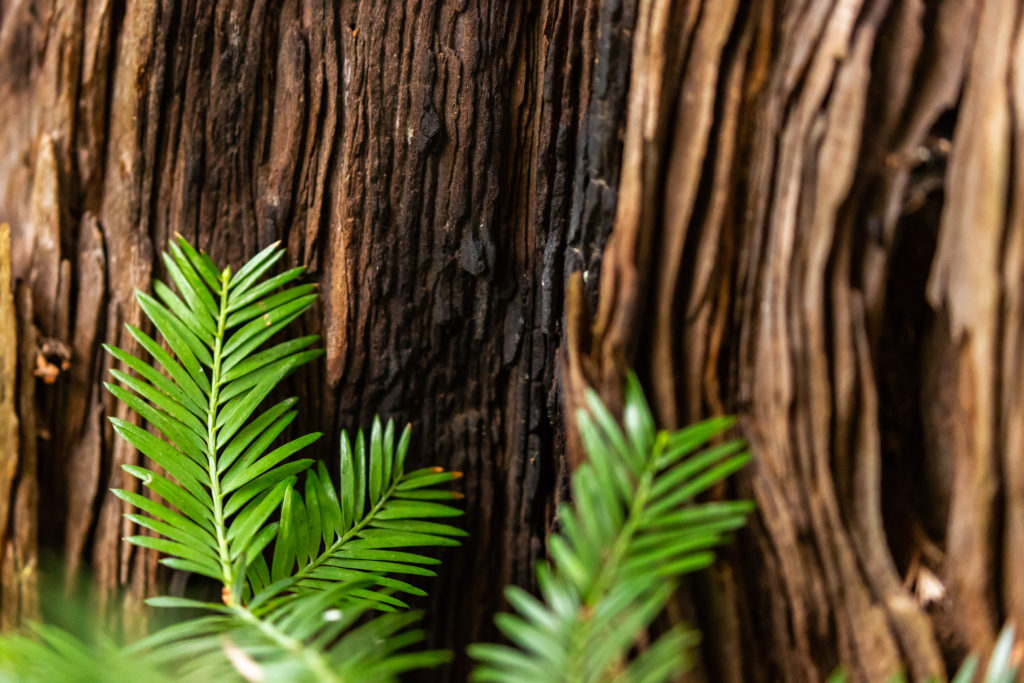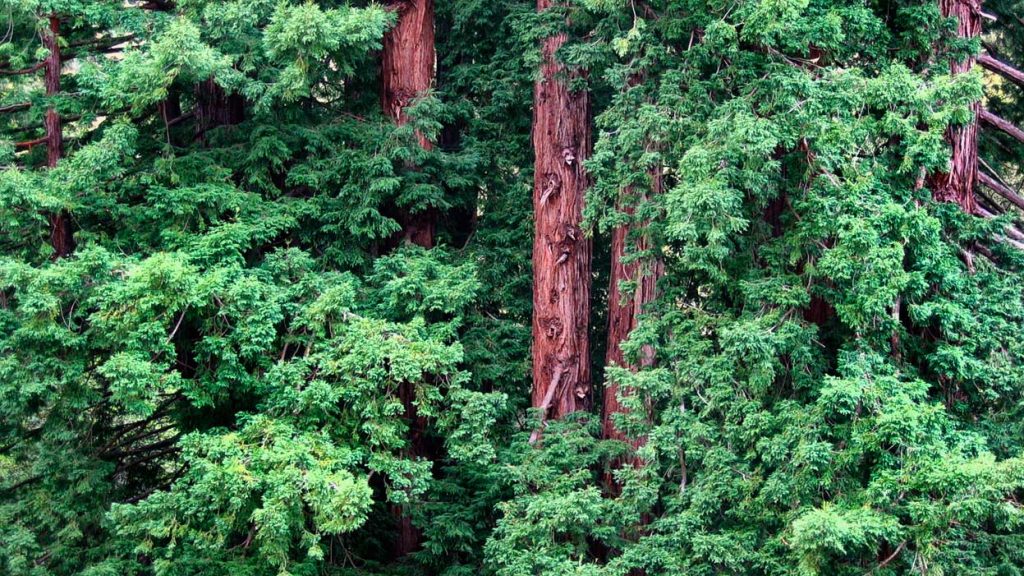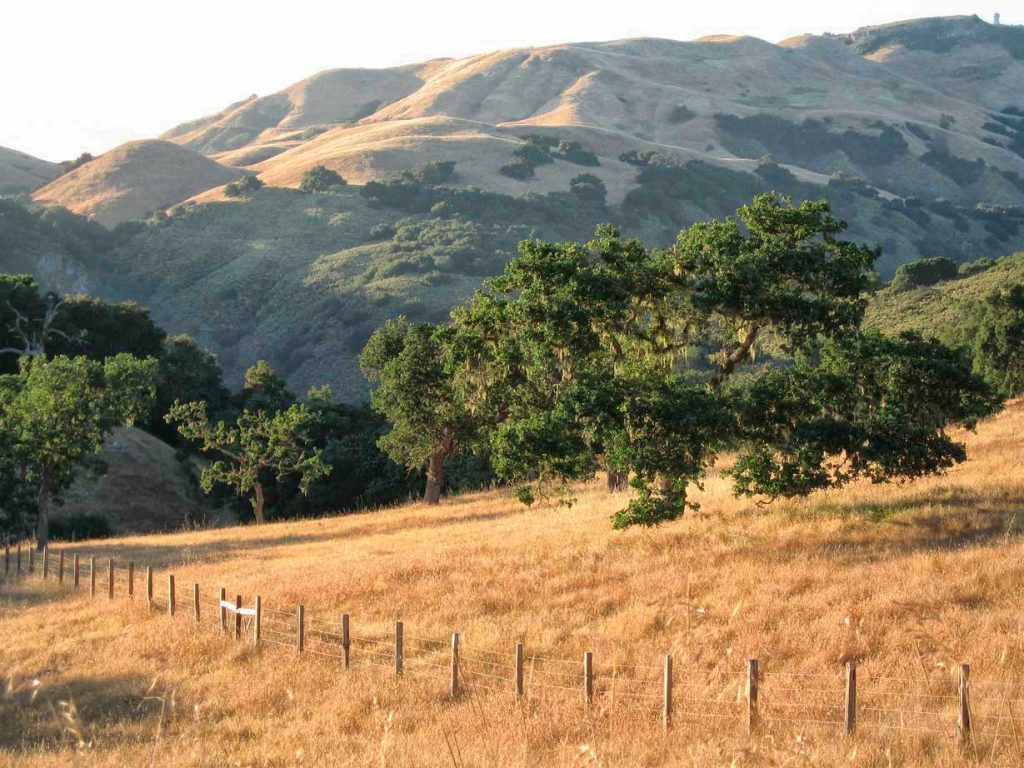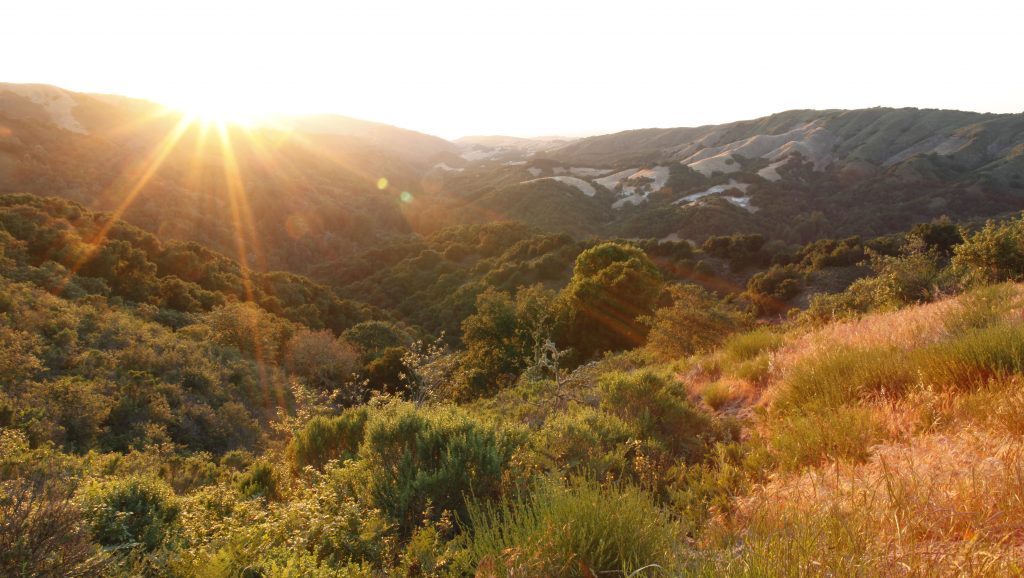
Woodlands and Wildlands
The Preserve’s 20,000 acres hosts a great variety of ecosystems.
Woodlands
Over half of The Preserve is blanketed by a mosaic of woodlands. The sheltered valleys and north facing hillsides host wide spreading canopies of evergreen coast live oak forests sprinkled with California-bay, Pacific madrones, and bigleaf maples. Tucked between the hills where it is cooler and wetter, towering redwoods grow beside an understory of tanoaks and California-bays. Riparian gallery forests filled with regal California sycamores, twisting California buckeyes, alders and willow weave through grasslands.
Trees offer many ecological benefits that benefit humanity, such as climate regulation, air purification, water filtration and beauty. They are also important habitat for wildlife. From decaying trees providing nutrients to decomposers to the shelter offered by fire-hollowed redwoods; our forests are teaming with life.
Savannah and Grasslands
In 2012, the Santa Lucia Conservancy completed a rigorous assessment of the status of the ecological health on The Preserve. Using the Open Standards for the Practice of Conservation developed by the Conservation Measures Partnership, the Conservancy completed a Biodiversity Management Needs Assessment, which identified conservation priorities. This process highlighted the Preserve’s native California grasslands as one of its most ecologically significant assets, also its biggest management challenge. Grasslands are essential to a tremendous variety of wildlife including golden eagles and burrowing owls, badgers and coyotes, California tiger salamander and California red-legged frog. Statewide, grasslands cover 10% of land area, but on The Preserve we have over 5,000 acres (25%) of grassland and savanna.
Coastal Scrub and Chapparal
Chaparral and coastal scrub ecosystems are made up of dense woody shrubs and form essential habitat for a variety of small mammals, birds, and reptiles. The two systems are distinguished by their vegetation communities. Coastal scrub, also called ‘soft chaparral,’ has less densely spaced shrubs with soft leaves that are drought deciduous, meaning they lose their leaves during the driest months. Coastal scrub plants produce aromatic oils to protect from grazing animals and their root systems are more shallow than chaparral. Chaparral may be described as too high to see over, too low to go under, and too thick to get through. Shrubs in this system can be 6’-12’ tall and have deep roots for collecting water from the substrate. The woody shrub vegetation in this system is more drought-tolerant than coastal scrub with small leathery evergreen leaves that orient vertically to maximize sun exposure. Both coastal scrub and chaparral share many species, making them hard to distinguish.Around the state of California, these systems are threatened by land use conversion, development, and fuel management practices. Despite the widespread conversion throughout the state, these systems provide broad benefits including biodiversity, recreation, soil stability, flood protection, erosion control, water quality and create important habitat to many avian, reptile, and mammal species.


